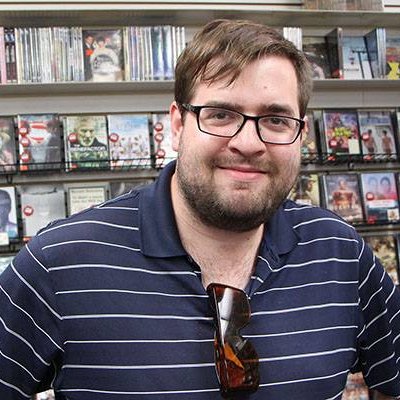Film critic Michael McNeely visits the Sundance Film Festival

By Michael McNeely
After a decade or so of attending Ontario and Quebec film festivals, I’m ready to expand my horizons. Next week, I plan to attend the Sundance Film Festival, located in Utah, and will be there from January 23 to January 28.
I am playing the role of myself, a deaf-blind film critic and movie enthusiast, who works for AMI-audio and AMI-tv. I want to demonstrate to others that it is possible to have a disability and to be a lover of film. Film has traditionally been inaccessible to people with disabilities, but conditions are slowly improving.
I still remember how I was discouraged from attaining a Bachelor’s degree in Film Studies at Queen’s University back in 2006. What’s worse is that I had almost all the films of the first-year curriculum at home (with closed captioning!). The school just wasn’t able to (or wouldn’t) provide closed captioning or subtitles for English-language films.
In 2012, I started attending the Toronto International Film Festival (TIFF), for what would be a yearly tradition. TIFF, with a theatre open year-round, eventually drew me to live in Toronto year-round too. I figured if I was going to move my life to a movie theatre, then the least the movie theatre could do was accommodate me and have captioning or subtitles for all movies.
Alas, in 2020, many films are still not screened with captioning. This means the Deaf film aficionado is behind the times, especially when Festivals are the source of the hype that surrounds many films coming out year-round. I am in an occupation that prides itself on seeing films first–because, you know, that’s how film critics are able to describe them to other people (and how we come up with intelligent questions for the director and the actors).
I wrote "seeing" in the last paragraph, wanted to change it to "experiencing," but figured the word could also be instructive of my own biases in addition to the biases of the film industry at large. Film may be considered a visual medium, but there is no reason why blind or partially sighted people cannot enjoy films, especially with features such as descriptive audio.
Accessibility is often an afterthought in the filmmaking process. Captioning and descriptive audio are both post-production tasks, meaning that they are completed after the filming is done. The lives of filmmakers are often stressful, and everything is down to the line for getting submissions out in time. However, with appropriate planning and foresight, accessibility can be incorporated more smoothly. AMI does it, after all.
I hope my presence at Sundance, my journalism, my networking, and this blog post all help others recognize that accessibility should not be an afterthought. Films are intended to be for everyone, regardless of what our disabilities are.
I have ordered some business cards–of course, I struggled with the card template maker, but that’s another story for another time–and on those business cards, I say: Michael McNeely, Accessibility and Film Critic. For, in order to do the job that I love, accessibility needs to come first. Otherwise, I don’t belong here–and I really, really want to be here.
Listen to Michael discuss his Sundance experience on Live from Studio 5, Friday January 24 at 10:15 a.m. Eastern on AMI-audio and AMI-tv.


